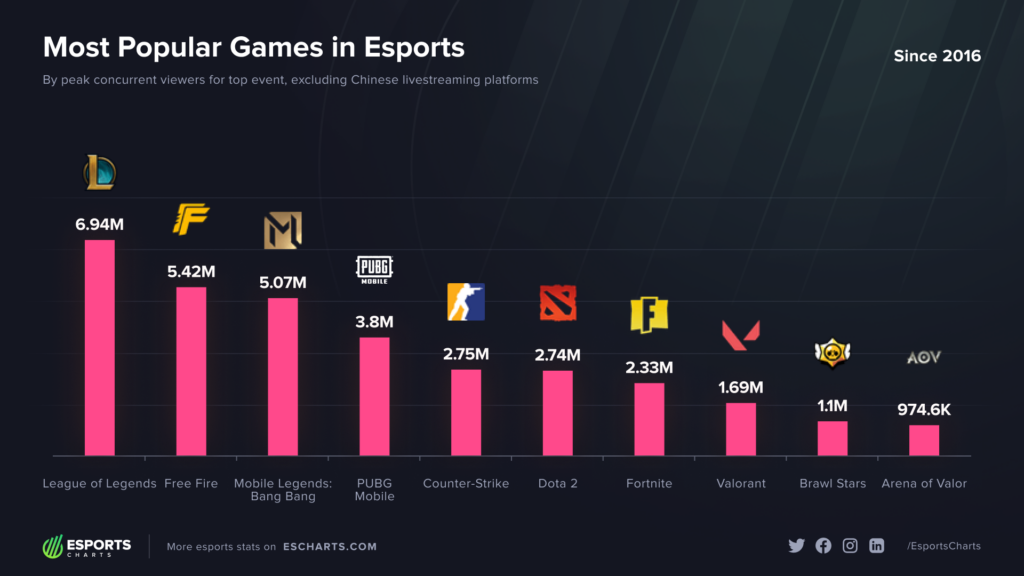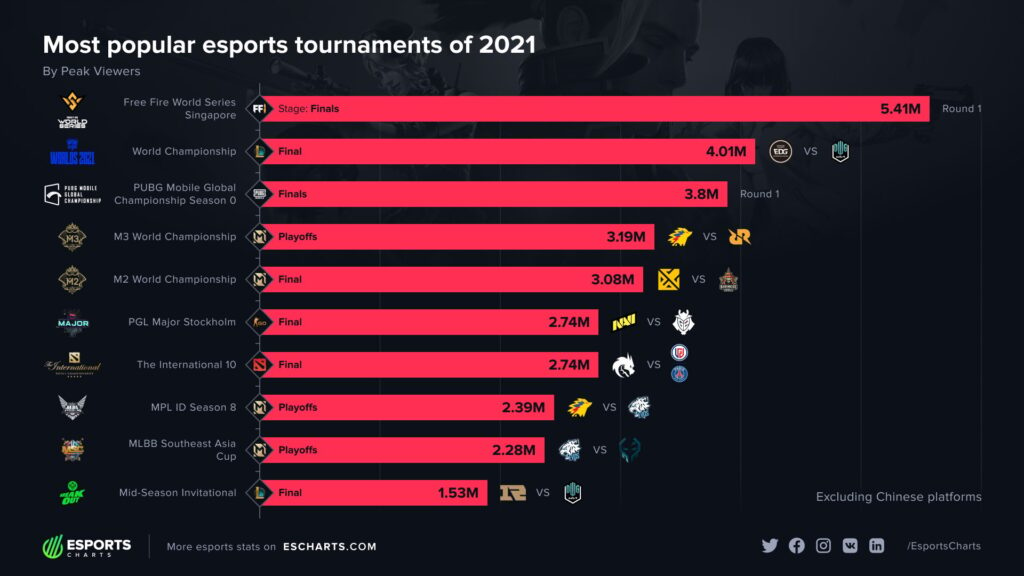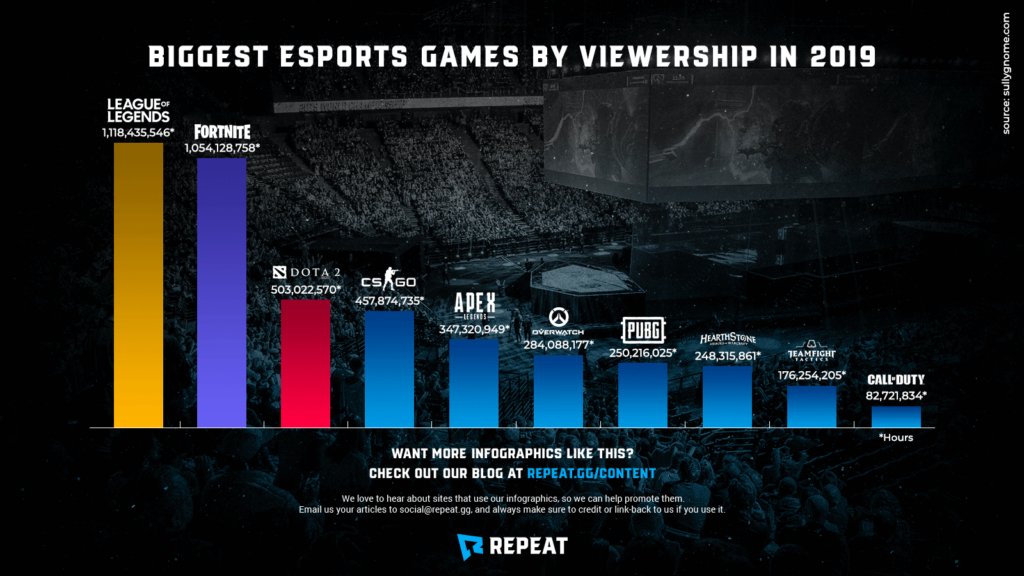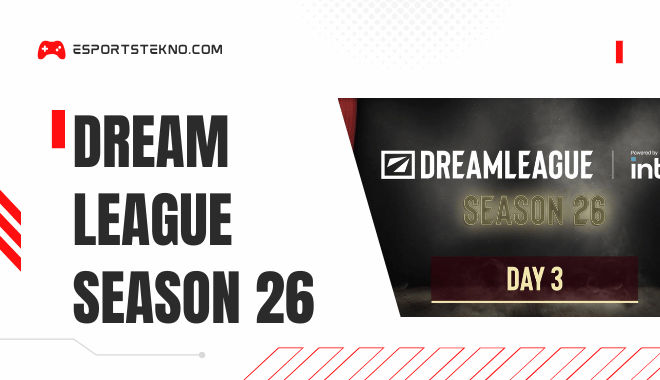In the rapidly evolving world of competitive gaming, one question consistently sparks heated debates among enthusiasts, industry professionals, and casual observers alike: what is the biggest esport? As someone who’s spent years tracking the ebbs and flows of competitive gaming ecosystems, I’ve found that this seemingly straightforward question opens up a fascinating exploration of how we measure success in the digital age.
The answer isn’t as simple as crowning a single champion. The esports landscape resembles a complex ecosystem where different titles dominate across various metrics – from prize pools and viewership to player base and cultural impact. Today, I’ll break down these different dimensions to provide a nuanced understanding of which games truly stand as the titans of competitive gaming in 2025.
Whether you’re a dedicated fan tracking your favorite pro players or simply curious about which games have captured global attention, this comprehensive analysis will help you understand the current state of competitive gaming’s most influential titles.
Defining “Biggest”: The Multiple Dimensions of Esports Success

Before diving into specific games, we need to establish what “biggest” actually means in the context of esports. Unlike traditional sports with decades or centuries of established metrics, esports is still developing its key performance indicators. When analyzing the size and impact of an esport, several crucial factors come into play:
Viewership Numbers
Perhaps the most straightforward metric is how many people actually watch competitive events. This includes:
- Peak concurrent viewers: The highest number of people watching simultaneously
- Hours watched: Total viewing time across all viewers
- Unique viewers: The total number of individual people who tuned in
- Year-round viewership: Consistent audience versus tournament spikes
Prize Money and Financial Ecosystem
The economic scale of an esport reveals much about its sustainability and growth:
- Total prize pools: The amount of money awarded in competitions
- Average player earnings: How much professionals typically make
- Sponsorship investment: Corporate backing and partnership deals
- Media rights deals: Broadcast partnerships with streaming platforms and TV networks
Player Base and Participation
A game’s overall popularity provides the foundation for its esports scene:
- Active monthly players: How many people play the game regularly
- Regional distribution: Global reach versus regional concentration
- Amateur to pro pipeline: Accessibility of competitive pathways
- Longevity: How long the game has maintained its player base
Industry Infrastructure
The supporting ecosystem around a game significantly impacts its competitive scene:
- Number of professional teams and organizations
- Tournament frequency and structure
- Developer support and investment
- Training facilities and resources
Cultural Impact
Some games transcend pure metrics to achieve broader cultural significance:
- Mainstream recognition
- Cross-media adaptations
- Celebrity and traditional sports involvement
- Educational programs and scholarships
With these dimensions in mind, let’s examine the contenders for the title of “biggest esport” across these various metrics.
League of Legends: The Global Phenomenon
When discussing the biggest esports in the world, League of Legends consistently emerges as the frontrunner across multiple metrics. Developed by Riot Games and released in 2009, this multiplayer online battle arena (MOBA) has built perhaps the most comprehensive competitive ecosystem in gaming history.
Unmatched Viewership Dominance
League of Legends’ viewership numbers are staggering. The 2022 World Championship finals between T1 and DRX peaked at over 5 million concurrent viewers (excluding Chinese platforms). When including Chinese viewership estimates, this number reportedly exceeds 70 million viewers, making it one of the most-watched sporting events globally.
“The scale of World Championship viewership has reached a point where it rivals traditional sports broadcasts,” notes esports analyst Jake Lucky. “What’s particularly impressive is the global distribution of this audience, with strong viewership across Asia, Europe, and the Americas.”
Year-round viewership also separates League from many competitors. While games like Fortnite might see massive spikes during specific events, League maintains strong numbers throughout its competitive season across multiple regional leagues.
Comprehensive Competitive Infrastructure
Riot Games has developed the most structured competitive ecosystem in esports:
- Global League System: Professional leagues operate in North America (LCS), Europe (LEC), China (LPL), Korea (LCK), and numerous emerging regions
- Tiered Competitive Structure: Clear pathways from amateur to professional play
- Regular Season Format: Weekly matches throughout the year rather than isolated tournaments
- International Competitions: Mid-Season Invitational and World Championship connecting regional ecosystems
This infrastructure creates stability for organizations, players, and fans. Teams like T1, G2 Esports, and JD Gaming have become some of the top esports teams globally largely through their League of Legends divisions.
Player Economics and Sustainability
League of Legends has established one of the most sustainable economic models in esports:
- Franchised Leagues: The LCS and LEC operate franchise systems where teams purchase permanent spots, eliminating relegation fears
- Revenue Sharing: Teams receive portions of league-wide sponsorship and media deals
- Standardized Player Contracts: Minimum salaries and player protections
- Diverse Revenue Streams: In-game purchases, merchandise, and media rights
Top players in major regions can earn seven-figure esports player salaries, with average salaries for LCS players reported around $400,000 annually. The game’s economic ecosystem supports thousands of professional players, coaches, content creators, and support staff worldwide.
Cultural Impact Beyond Gaming
League of Legends has transcended gaming to achieve broader cultural significance:
- Mainstream Music Collaborations: K/DA, True Damage, and Pentakill virtual bands have charted on Billboard
- Netflix Series: Arcane became one of Netflix’s highest-rated original series, introducing the game’s universe to non-players
- University Programs: Dozens of colleges offer esports scholarships specifically for League of Legends players
- Olympic Recognition: League was featured as a demonstration sport at the 2018 Asian Games
“What sets League apart is its evolution from a game into a cultural platform,” explains entertainment analyst Maria Chen. “Riot has successfully expanded the IP into music, animation, and fashion in ways that resonate beyond the core gaming audience.”
While League of Legends presents the strongest overall case for the “biggest esport” title, several other games dominate specific metrics and deserve close examination.
Dota 2: The Prize Pool King

Valve’s Dota 2 stands out primarily for its extraordinary prize pools, particularly through its annual tournament The International (TI).
Record-Breaking Prize Money
The International has consistently broken esports prize pool records:
- TI9 (2019): $34.3 million prize pool (the largest in esports history)
- TI10 (2021): $40 million prize pool
- Crowdfunding Model: Significant portion of prize money comes from player purchases of in-game “Battle Pass”
These massive prize pools have created more Dota 2 millionaires than any other esport. The top 50 highest-earning esports players historically have predominantly been Dota 2 professionals.
“Dota 2’s economic model is fascinating because it directly connects the player community to professional prize pools,” notes economics researcher Dr. Sarah Williams. “Players feel personally invested in the competitive scene because they’ve contributed to its funding.”
Passionate but Concentrated Audience
While Dota 2’s viewership doesn’t match League of Legends in raw numbers, it boasts an exceptionally dedicated core audience:
- TI10 Peak: Approximately 2.7 million concurrent viewers (excluding China)
- Higher Average Watch Time: Dota 2 viewers typically watch for longer durations
- Regional Concentration: Stronger in Eastern Europe, Russia, Southeast Asia, and China
Player-Driven Ecosystem
Unlike League’s developer-controlled structure, Dota 2’s competitive scene features:
- Open Circuit Model: Third-party tournaments alongside Valve’s Dota Pro Circuit
- Lower Barrier to Entry: Open qualifiers for major events
- Community-Driven Development: Strong influence from players and fans on game balance
This approach creates both advantages and challenges. While it allows for more grassroots involvement, it can also lead to less stability for organizations and players compared to franchised leagues.
Counter-Strike: The Enduring Classic
Counter-Strike (now in its Counter-Strike 2 iteration after CS:GO) represents perhaps the most resilient esport, maintaining relevance for over two decades since its original release.
Unmatched Longevity and Consistency
Few competitive games can match Counter-Strike’s staying power:
- 23+ Years of Competitive Play: Evolving through multiple versions while maintaining core gameplay
- Consistent Viewership Growth: CS:GO set viewership records in 2023 before transitioning to CS2
- Event Frequency: More tier-one tournaments than almost any other esport
- Multi-Generation Appeal: Attracting new players while retaining veterans
“Counter-Strike’s endurance is remarkable in an industry where games often fade after a few years,” observes veteran esports journalist Duncan Shields. “Its fundamentals are so sound that it remains engaging despite relatively modest visual updates.”
Global Tournament Ecosystem
Counter-Strike features perhaps the most open and diverse tournament structure:
- Multiple Major Tournament Organizers: ESL, BLAST, PGL, and others
- Circuit System: Regular events throughout the year culminating in Major Championships
- Global Representation: Strong competitive scenes across Europe, North America, South America, and increasingly Asia
- Low Technical Barriers: The game runs on modest esports hardware recommendations, making it accessible globally
Betting and Fantasy Integration
Counter-Strike has developed the most robust betting and fantasy ecosystem in esports:
- Match Betting: Widespread legal betting markets
- Fantasy Platforms: Dedicated fantasy esports focused heavily on CS
- Skin Economy: In-game item trading and betting (though more regulated now)
This economic layer has further embedded Counter-Strike in the broader sports ecosystem and contributed to its spectator appeal.
Fortnite: The Mainstream Breakthrough
Epic Games’ Fortnite represents perhaps the most culturally impactful esport, despite having a less structured competitive scene than some of its counterparts.
Unprecedented Prize Money Distribution
Fortnite made headlines with its approach to prize money:
- $100 Million Commitment: Epic’s initial 2018 announcement of $100 million for Fortnite esports
- Fortnite World Cup 2019: $30 million prize pool with $3 million to the solo champion
- Broader Distribution: More players earning prize money across more events
- Regional Competitions: Cash Cups and FNCS events with significant prize pools
The Fortnite esports wiki documents how Epic Games revolutionized esports prize distribution by making competitions more accessible to emerging talent rather than concentrating rewards among established professionals.
Cultural Phenomenon Status
No esport has penetrated mainstream culture quite like Fortnite:
- Celebrity Involvement: Drake, Travis Scott, Ariana Grande, and other A-list celebrities
- Crossover Events: Marvel, Star Wars, NFL, and numerous other major entertainment properties
- In-Game Concerts: Revolutionary virtual events drawing millions of concurrent participants
- Traditional Media Coverage: Mainstream news coverage of Fortnite phenomena and dance moves
Accessibility and Demographic Reach
Fortnite’s battle royale format and free-to-play model created unprecedented accessibility:
- Cross-Platform Play: Competing across consoles, PC, and mobile devices
- Younger Demographic: Reaching players as young as 8-10 years old
- Casual to Competitive Pipeline: In-game Arena mode creating clear path to competitions
- Streaming Dominance: Consistently among top games on Twitch and YouTube Gaming
“Fortnite’s significance extends beyond competitive metrics,” argues digital culture researcher Emma Torres. “It introduced competitive gaming to demographics that traditional esports had failed to reach, particularly younger players and those outside core gaming communities.”
Mobile Esports: The Emerging Giant

While often overlooked in Western markets, mobile esports represents the fastest-growing sector of competitive gaming globally, with titles like Mobile Legends Bang Bang leading the charge.
Unparalleled Player Base
Mobile esports dominate in raw player numbers:
- Honor of Kings/Arena of Valor: Over 100 million daily active users
- PUBG Mobile: Over 30 million daily active users
- Free Fire: Over 80 million daily active users
- Mobile Legends: Over 75 million monthly active users
These numbers dwarf even the most popular PC titles, creating massive potential audiences for competitive events.
Regional Dominance in Asia
Mobile esports have achieved mainstream status across Asia:
- Indonesia: Mobile Legends Professional League fills stadiums
- Thailand: Arena of Valor competitions broadcast on national television
- India: BGMI (Indian version of PUBG Mobile) tournaments with massive viewership
- China: Honor of Kings professional league with sophisticated infrastructure
“The growth of mobile gaming in competitive esports has fundamentally shifted the global landscape,” notes mobile gaming analyst Wei Chen. “Western markets often underestimate the scale of mobile esports because their impact is most pronounced in Southeast Asia, India, and China.”
Accessibility and Future Growth
Mobile esports’ low barriers to entry drive continued expansion:
- Hardware Accessibility: Smartphones vs. gaming PCs
- Free-to-Play Dominance: Lower financial barriers
- Shorter Match Times: Better suited to casual viewing
- Emerging Market Focus: Strong in regions with limited PC gaming infrastructure
Call of Duty: Traditional Media Integration
Activision Blizzard’s Call of Duty esports wiki shows how the franchise has pioneered traditional sports integration through the Call of Duty League (CDL).
City-Based Franchise Model
The CDL adopted approaches from traditional sports:
- Geolocation: Teams representing specific cities
- Franchise Fees: Reported $25 million entry cost
- Traditional Sports Ownership: Involvement from owners of NFL, NBA, and MLB teams
- Home/Away Structure: (Pre-pandemic) home and away matches in team cities
Broadcast Quality and Production
Call of Duty has invested heavily in production values:
- Television-Quality Broadcasts: Professional studio setups
- Narrative-Driven Content: Player stories and team rivalries
- Statistical Analysis: Advanced performance metrics
- Celebrity Commentary: Featuring former pros and personality-driven casting
Cross-Platform Promotion
The integration between casual and competitive Call of Duty is substantial:
- In-Game Promotion: Esports viewership rewards in the game client
- CDL Skins: Team cosmetics available for purchase
- Warzone Integration: Connecting battle royale and competitive communities
- Professional Player Streaming: Organized content creation from CDL pros
Measuring Across Multiple Dimensions: The Verdict
Having examined the leading contenders across various metrics, we can now assess which esport truly deserves the title of “biggest” in different categories:
Overall Ecosystem: League of Legends
When considering the complete picture of viewership, global reach, stable infrastructure, and cultural impact, League of Legends makes the strongest case for the biggest esport overall. Its combination of:
- Massive global viewership
- Structured year-round competition
- Developer investment and support
- Cross-media expansion
- Longevity (14+ years and growing)
creates the most comprehensive competitive ecosystem in gaming history.
Prize Money: Dota 2
If measuring purely by prize money distribution, Dota 2 remains unmatched. The International’s prize pools dwarf even major traditional sporting events, creating life-changing payouts for successful players.
Cultural Impact: Fortnite
For mainstream recognition and cultural penetration, Fortnite stands alone. Its influence extends far beyond competitive gaming into broader entertainment, fashion, and youth culture.
Longevity and Stability: Counter-Strike
Counter-Strike’s two-decade resilience demonstrates unmatched staying power. While other games rise and fall, CS has maintained relevance through multiple generations of players and game iterations.
Future Growth Potential: Mobile Esports
Looking forward, mobile esports present the clearest path to continued audience expansion, particularly in emerging markets where smartphone penetration far exceeds gaming PC availability.
The Factors That Create Esports Giants
Analyzing these successful esports reveals several common factors that contribute to competitive gaming success:
Accessibility Balanced with Depth
The biggest esports strike a delicate balance between being approachable for new players while offering sufficient strategic depth for competitors and viewers:
- Low Initial Barrier: Easy to understand basic concepts
- High Skill Ceiling: Difficult to master completely
- Spectator Clarity: Viewable and understandable without extensive game knowledge
- Memorable Moments: Opportunities for spectacular individual plays
Developer Support and Investment
Successful esports receive substantial support from their developers:
- Dedicated Esports Teams: Staff focused specifically on competitive play
- Balance Updates: Regular adjustments for competitive health
- Tournament Organization/Support: Direct investment in competitions
- Promotional Integration: Connecting casual players to competitive scene
Community Engagement and Ownership
The relationship between developers and community significantly impacts longevity:
- Feedback Incorporation: Listening to pro players and fans
- Community Events: Supporting grassroots competitions
- Content Creator Ecosystem: Encouraging educational and entertainment content
- Transparency: Clear communication about competitive changes
Viewer Experience Optimization
The biggest esports have continually refined their spectator experience:
- Broadcast Quality: Professional production values
- Storytelling: Narrative development around players and teams
- Statistical Context: Data visualization and analysis
- Viewing Flexibility: Multiple streams, co-streaming, and viewing options
The Regional Factor: Different Leaders in Different Markets
An important nuance in determining the “biggest” esport is acknowledging regional variations. Different games dominate different markets:
East Asia
- South Korea: League of Legends, StarCraft
- China: Honor of Kings, League of Legends, Dota 2
- Japan: Street Fighter, Apex Legends
Southeast Asia
- Philippines: Mobile Legends, Dota 2
- Indonesia: Mobile Legends, Free Fire
- Thailand: Arena of Valor, PUBG Mobile
North America
- United States: Call of Duty, Fortnite, League of Legends
- Canada: Counter-Strike, Rainbow Six Siege
Europe
- Western Europe: League of Legends, Counter-Strike
- Eastern Europe/CIS: Counter-Strike, Dota 2
Latin America
- Brazil: Free Fire, Counter-Strike, Rainbow Six Siege
- Mexico: Free Fire, Clash Royale
These regional differences highlight how cultural factors, hardware accessibility, and local marketing all influence which esports achieve dominance in specific markets.
The Future: Emerging Contenders and Trends
While the current landscape has clear leaders, several emerging games and trends could reshape the hierarchy:
Valorant’s Rapid Rise
Riot Games’ tactical shooter Valorant has demonstrated remarkable growth since its 2020 launch:
- Familiar Developer: Leveraging Riot’s esports expertise from League of Legends
- Strategic Partnership Program: Creating stability for organizations
- Counter-Strike Familiarity: Accessible to fans of tactical shooters
- Strong Female Representation: Higher percentage of women competitors than most FPS games
Battle Royale Evolution
The battle royale genre continues to evolve competitively:
- Apex Legends: Growing esports scene with team-based gameplay
- Fortnite’s Continued Innovation: Adapting formats and keeping content fresh
- PUBG’s Resilience: Maintaining strong competitive scenes in multiple regions
Fighting Game Renaissance
Traditional fighting games are experiencing renewed competitive interest:
- Street Fighter 6: Strong initial reception and tournament viewership
- MultiVersus: Platform fighter with accessible gameplay and recognizable characters
- FGC Unification: Efforts to create more cohesive competitive structures
The Blending of Gaming and Entertainment
The line between competitive gaming and entertainment continues to blur:
- Content Creator Tournaments: Events featuring personalities rather than professionals
- Alternative Formats: Modified rulesets and showmatches
- Transmedia Integration: Connections to anime, music, and other media
Conclusion: A Dynamic Ecosystem Rather Than a Single Champion
As we’ve explored throughout this analysis, crowning a single “biggest esport” oversimplifies a complex and nuanced ecosystem. Different games lead in different metrics, and regional variations create distinct competitive landscapes across the globe.
League of Legends presents the strongest overall case when considering viewership, global reach, stable infrastructure, and cultural impact. However, Dota 2’s prize pools, Fortnite’s cultural penetration, Counter-Strike’s longevity, and mobile esports’ massive player bases all represent valid claims to leadership in specific dimensions.
What’s perhaps most fascinating about esports is how rapidly this landscape can shift. Unlike traditional sports that evolve over decades, esports can transform dramatically in just a few years as new games emerge, technologies advance, and player preferences change.
For those looking to understand or participate in competitive gaming, this diversity represents an incredible opportunity. Whether you’re drawn to the strategic depth of MOBAs, the precision of tactical shooters, the accessibility of mobile games, or the spectacle of battle royales, the esports ecosystem offers compelling competitive experiences across numerous games and platforms.
The question “what is the biggest esport?” ultimately reveals less about a single dominant game and more about the remarkable maturation of competitive gaming as a global entertainment medium – one that continues to grow, evolve, and surprise even its most dedicated observers.
Daffa Nur Rafie Alam is a passionate gaming enthusiast and technology aficionado dedicated to exploring the dynamic intersection of esports, gaming, and innovation. With a keen eye for emerging trends and a deep understanding of the gaming landscape, he provides insightful analysis and engaging content for both casual gamers and industry professionals. As a contributor to Esportstekno.com, Daffa ensures that readers receive reliable information that enhances their understanding of the ever-evolving world of esports.
Daffa Nur Rafie Alam is a passionate gaming enthusiast and technology aficionado dedicated to exploring the dynamic intersection of esports, gaming, and innovation. With a keen eye for emerging trends and a deep understanding of the gaming landscape, he provides insightful analysis and engaging content for both casual gamers and industry professionals. As a contributor to Esportstekno.com, Daffa ensures that readers receive reliable information that enhances their understanding of the ever-evolving world of esports. Join him on this exciting journey as he shares valuable insights and fosters a community of like-minded individuals passionate about the innovations shaping the gaming industry.
 eSportsTekno Your Gateway to the Future of Gaming and Innovation
eSportsTekno Your Gateway to the Future of Gaming and Innovation
